Today, I’d like to talk to you about “What Is Gyokuro Imperial Green Tea?”. Gyokuro Imperial Green Tea demonstrates the skill and precision of Japanese tea farming. Admired for its outstanding taste and unparalleled quality, Gyokuro, which means “jade dew,” delivers a sensory experience that is both elegant and deeply gratifying. This exceptional tea represents a drink and a symbol of the intricate agricultural traditions and rich cultural heritage that characterize Japanese tea culture.
What makes Gyokuro unique is its particular farming method. Unlike other types of green tea, Gyokuro plants are shielded from direct sunlight for about three weeks before being harvested. This shading technique, called “ooishita,” enhances chlorophyll production and decreases tannin levels, resulting in a tea that is abundant in amino acids and features a sweet, savory flavor. The meticulous balance of shade and light gives rise to a distinct, subtle, intricate flavor profile, turning every sip into a journey into the essence of Japanese tradition.
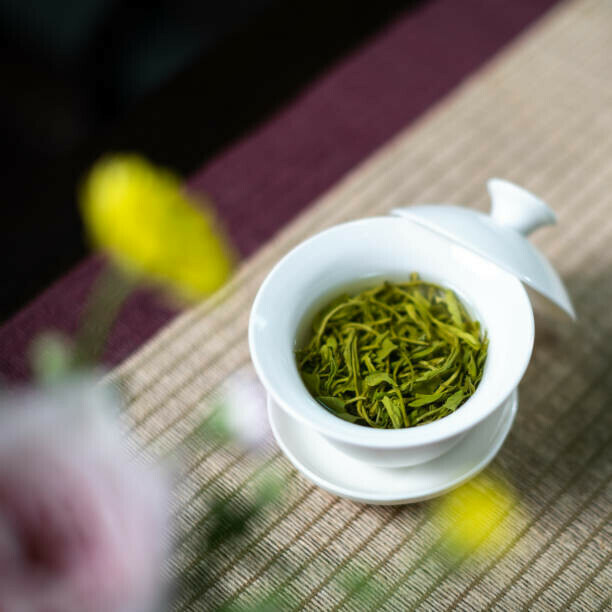
The distinct characteristics of Gyokuro are apparent not only in its taste but also in its appearance and fragrance. The leaves, carefully hand-picked, display a vibrant, deep green color, reflecting the high chlorophyll content. When steeped, Gyokuro produces a light, nearly transparent liquid with a lingering, sweet fragrance that is both welcoming and captivating. The initial taste unveils a silky, smooth consistency with a sophisticated combination of sweetness and a subtle salty hint, a distinguishing feature of its outstanding excellence. This unique flavor sets Gyokuro apart from other green teas and cements its position as an imperial tea.
The reputation and prestige of Gyokuro in Japanese tea culture cannot be overstated. Often set aside for special occasions and esteemed visitors, Gyokuro represents luxury and sophistication. Its production is limited to specific regions in Japan, such as Uji, Yame, and Asahina, where the climatic conditions and skilled tea farmers come together to create this remarkable tea. The exacting process and the attention given at every stage, from cultivation to harvest, mirror the deep respect and reverence the Japanese hold for their tea traditions.
In conclusion, Gyokuro Imperial Green Tea is more than just a beverage; it is a tribute to Japanese culture and legacy. Its unique farming method, distinctive traits, and esteemed reputation stand out among green teas. Each cup of Gyokuro provides:
- A taste of the meticulous craftsmanship and deep commitment that define Japanese tea culture.
- Inviting tea enthusiasts to enjoy the flavor.
- Rich history.
- Tradition behind every leaf.
The Rich History and Tradition Behind Gyokuro Tea
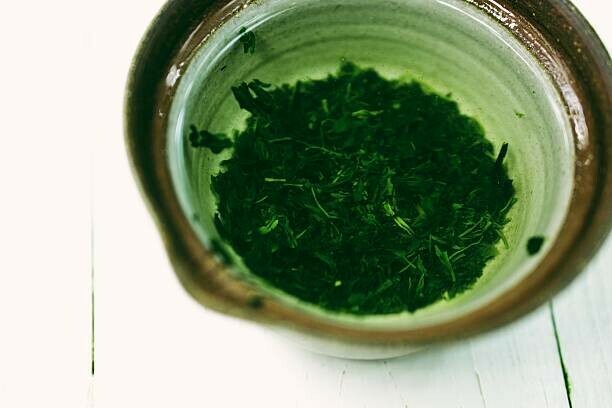
GYOKURO tea is a revered Japanese green tea variety with a rich history dating back to the Edo period. Its distinct sweet, umami flavor and vibrant green leaves make it more than just a beverage—it’s a cultural treasure deeply intertwined with Japanese history and tradition. The origins of Gyokuro tea can be traced back to the innovative Edo-era tea masters who aimed to create a tea of unparalleled quality and flavor.
The journey of Gyokuro tea began in the early 19th century when tea cultivators in the Uji region of Japan experimented with shading their tea plants before harvest. This shading technique, which involves covering the tea bushes with straw or bamboo mats for about three weeks, significantly changes the chemical composition of the leaves, resulting in a tea rich in chlorophyll, low in tannins, and high in amino acids. The introduction of this innovation represented a significant shift from the conventional techniques used in producing green tea and laid the groundwork for Gyokuro to gain a reputation as a highly respected type of tea.
In Japanese culture, Gyokuro holds a place of honor. It is often reserved for special occasions and served to esteemed guests, reflecting the deep respect and hospitality central to Japanese tea culture. Gyokuro tea ceremonies are elaborate and carefully choreographed, highlighting the elegance and refinement associated with this exceptional tea. Preparing and serving Gyokuro is seen as an art form, a way to express gratitude and build connections. The tea’s vibrant color, delicate aroma, and complex flavor profile symbolize sophistication and grace.
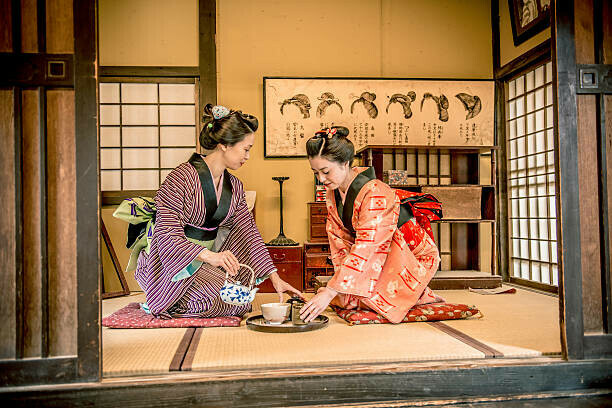
Over the centuries, the methods of producing Gyokuro have evolved, yet the commitment to quality and tradition remains steadfast. Modern advancements have refined the shading techniques, improving consistency and enhancing the flavor profile of Gyokuro. Innovations in tea cultivation and processing have allowed for greater control over the growing environment, ensuring that each batch of Gyokuro meets the high standards set by its predecessors. Despite these advancements, the essence of Gyokuro production remains rooted in the time-honored practices that have been passed down through generations.
Today, Gyokuro continues to be celebrated as one of Japan’s finest teas. Its rich history, tradition, unique production methods, and cultural significance make it a cherished part of Japanese heritage. Each sip of Gyokuro offers a taste of its exquisite flavor and a connection to the centuries-old tradition and the meticulous craftsmanship that have made it a symbol of excellence in the world of tea.
Savoring the Experience: Brewing the Perfect Cup of Gyokuro
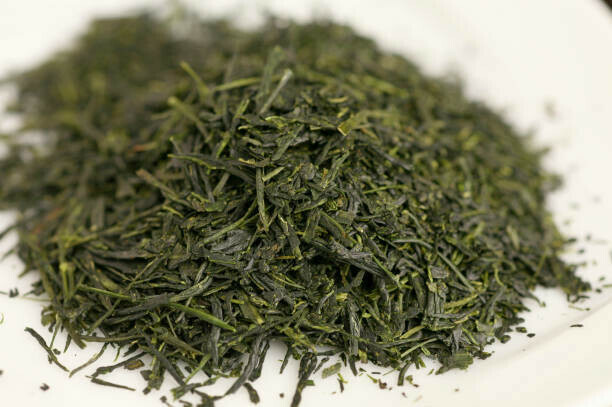
Preparing the ideal cup of Gyokuro is a skill that encourages you to appreciate not only the exceptional taste but also the mindful process that turns this remarkable tea into a luxurious experience. Gyokuro is famous for its sweet, savory taste and demands a gentle and accurate brewing technique to fully bring out its distinct qualities. Every stage in the brewing process presents an opportunity to engage with the deep-rooted tradition of Japanese tea culture and to recognize the careful craftsmanship involved in producing Gyokuro.
To embark on your exploration of the world of Gyokuro, begin by considering the quality of water. Pure, soft water is crucial for bringing out the best in Gyokuro. Fill your teapot with fresh, filtered water and heat it to a precise temperature of 50-60 degrees Celsius (122-140 degrees Fahrenheit). The significance of water temperature cannot be emphasized enough; if it is too hot, the delicate leaves will become bitter, and if it is too cool, the full flavor will not be extracted. This low temperature ensures that the amino acids responsible for Gyokuro’s savory flavor are preserved, resulting in a sweet and flavorful experience with each sip.
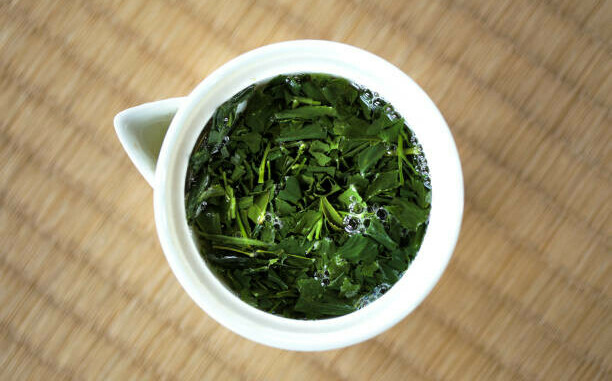
After this, measure two teaspoons (approximately 10 grams) of Gyokuro leaves for every 60 milliliters of water. The generous leaf-to-water ratio is essential for achieving the desired intensity and depth of flavor. Place the leaves in a small, pre-warmed teapot, allowing them to gently expand and release their aromatic oils.
Pour the heated water over the leaves and cover the teapot. Steep the tea for approximately two minutes. The steeping time is crucial in balancing the extraction of flavors; a shorter steep results in a more delicate brew, while a longer steep can draw out bitterness. During this time, the leaves unfurl, releasing their rich green essence into the water.
Once the steeping is complete, pour the tea into a small cup, extracting every drop. Gyokuro is traditionally served in small quantities to fully appreciate its concentrated flavor. As you take your first sip, notice the smooth, velvety texture and the layered flavors that unfold on your palate – the sweetness, the umami, and the subtle vegetal notes that make Gyokuro so distinctive.
To further enhance the umami flavor, consider experimenting with different steeping techniques. A second and even third steep can reveal new dimensions of taste. For the subsequent brews, slightly increase the water temperature and reduce the steeping time to around 30 seconds, allowing the complex flavors to continue to evolve without overpowering the subtle sweetness.
Brewing Gyokuro is more than a simple act; it’s a ritual that connects you to centuries of Japanese tea tradition. By following these steps and paying attention to the details, you can create a cup of Gyokuro that is not only delicious but also a profoundly satisfying and meditative experience. Enjoy the journey of discovering the perfect brew and the rich, umami flavors that define this extraordinary tea.
Health Benefits and Modern Appeal of Gyokuro Tea

Gyokuro tea, often considered the highest quality green tea, provides a delightful sensory experience and offers numerous excellent health benefits, making it a valuable addition to any wellness regimen. This exceptional tea is known for its sweet and savory flavor. It contains a range of health-promoting compounds due to the careful cultivation process, which involves shading the tea plants before harvest, resulting in a concentrated blend of beneficial elements that make Gyokuro a wellness powerhouse.
One of Gyokuro’s notable features is its high level of catechins, especially epigallocatechin gallate (EGCG), a potent antioxidant recognized for its ability to combat oxidative stress, reduce inflammation, protect cells from damage, decrease and lower the risk of chronic diseases, and support overall immune function. Gyokuro is abundant in L-theanine, an amino acid that promotes relaxation and mental clarity without the jittery effects often associated with caffeine. The combination of L-theanine and caffeine in Gyokuro provides a balanced energy boost, enhancing focus and cognitive function while promoting a sense of calm.
Compared to other teas, Gyokuro is distinguished by its unique cultivation process, which significantly increases its chlorophyll and amino acid content. This contributes to its vibrant green color and distinctive flavor and enhances its nutritional profile. While all green teas offer health benefits, Gyokuro’s shading process elevates it, providing higher levels of beneficial compounds that support heart health, weight management, and detoxification. The umami flavor, attributed to the high levels of theanine and glutamic acid, also sets Gyokuro apart, making it a more enjoyable and fulfilling beverage for health-conscious consumers.
The modern appeal of Gyokuro encompasses a variety of factors, attracting a global audience seeking both luxury and wellness. In today’s fast-paced world, people are increasingly turning to Gyokuro for its ability to provide a serene and meditative tea-drinking experience. Its calming characteristics make it a perfect solution for the stresses of modern life, offering a moment of tranquility with every portion. Moreover, the growing interest in natural and holistic health solutions has propelled Gyokuro into the spotlight, with more people recognizing its superior health benefits and incorporating it into their daily routines.
Gyokuro’s popularity is also driven by the increasing appreciation for authentic and artisanal products. As consumers become more discerning about the quality and origin of their food and beverages, Gyokuro’s traditional cultivation methods and the artistry involved in its production resonate deeply. The tea’s storied history and cultural significance add to its allure, making it a sought-after commodity for enthusiasts and health aficionados.
In conclusion, Gyokuro tea is a remarkable combination of tradition, flavor, and health benefits, offering a unique appeal that continues to captivate a global audience. Its rich nutritional profile, superior health-promoting properties, and modern-day relevance make it not just a beverage but a holistic experience. Whether you are a seasoned tea lover or a newcomer to the world of green tea, Gyokuro promises a journey of taste and wellness that is both enriching and enjoyable.
I would love to receive your comments down below, in case of any.

Your thorough exploration of Gyokuro Imperial Green Tea is captivating! The emphasis on shading techniques and its impact on flavor adds depth to understanding this tea. I’m particularly intrigued by the mindful brewing process you’ve outlined—it truly highlights the reverence for tradition and craftsmanship.
Discussing the health benefits alongside the cultural significance enriches the appreciation for Gyokuro. It’s interesting to see how a beverage can offer both sensory delight and wellness support.
Overall, your article beautifully captures Gyokuro’s essence, making it not just a drink but a holistic experience worth savoring and discussing. Thanks for sharing such insightful knowledge!
Thank you for your kind words. I’m thrilled to hear that you were fascinated by the exploration of Gyokuro Imperial Green Tea. It’s amazing how shading techniques can significantly influence the flavor, resulting in a unique and refined tea experience.
I’m happy that the mindful brewing process resonated with you. The tradition and craftsmanship behind Gyokuro are awe-inspiring, and it’s fantastic to see that reflected in your comment.
The health benefits and cultural significance of Gyokuro bring an extra layer of depth to this exceptional tea. Sharing how a beverage can provide sensory delight and wellness support is a joy.
Thank you for sharing your thoughts. Your feedback enhances the conversation and showcases Gyokuro’s holistic experience. I’m delighted to have provided insights that you found valuable.